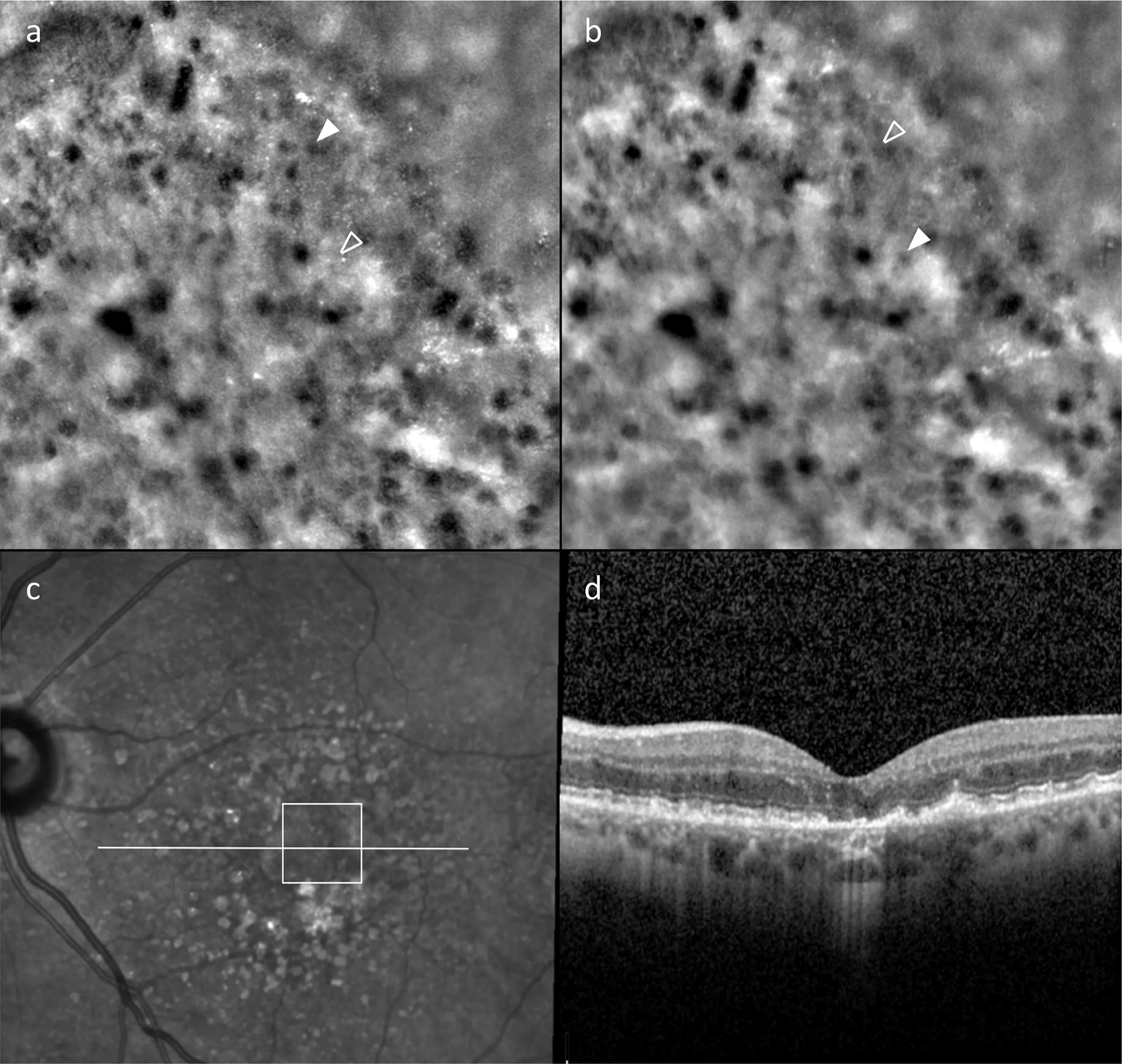Non-neovascular AMD: update on candidate AO biomarkers
The PINNACLE Study reports novel clinical insight in intermediate AMD and GA, obtained with RTX1 adaptive optics retinal cameras at Moorfields Eye Hospital NHS FT, University Hospital Southampton NHS FT, Medical University of Vienna, and University Hospital of Basel.
In a subset of patients, they investigated a common finding in non-neovascular AMD: hyporeflective clumps (HRC) on adaptive optics ophthalmoscopy (AOO), that appear as hyperreflective foci (HRF) on OCT.
The study highlights limitations of OCT in assessing HRFs, and demonstrates that RTX1 AO imaging enables precise phenotyping of HRCs and suggests that their size and speed might represent useful biomarkers:
- “The majority of HRCs are a diameter consistent with microglia, but could also represent RPE cells. HRCs appear larger in images of cRORA, which may indicate activation of, or a change in, the constituent cells.”
- HRCs can move up to 0.015µm/s, and HRC migration was detectable in sequential RTX1 AO images captured 1 to 2 hours apart.
Congratulations to the PINNACLE study team for these significant advances!
Discover the RTX1 AO camera, or contact us to learn more.

Reference:
Holmes, C., Kazantzis, D., Raza, S.A. et al. Using adaptive optics to assess hyporeflective clump speed and size in age-related macular degeneration in the PINNACLE Study. (PINNACLE Study Report 6). Eye (2025). https://doi.org/10.1038/s41433-025-03951-7
